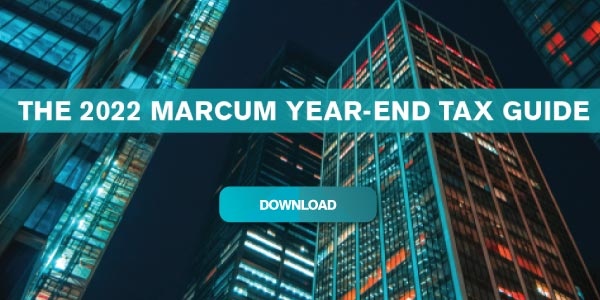Renewable Energy Incentives from the Inflation Reduction Act
On August 16, 2022, President Biden signed into law the most significant piece of legislation for the renewable energy and storage space in almost 20 years. The Inflation Reduction Act (IRA) is a slimmer version of the Build Back Better bill that West Virginia Senator Joe Manchin opposed in its original form. The federal government will provide tax incentives up to $369 billion for new solar, wind, thermal, and energy storage devices over the next decade. The IRA was signed into law just as some renewable energy provisions were about to lapse. The former laws also did not provide any federal tax incentives for the standalone energy storage or clean hydrogen industries.
Extension of the Investment and Production Tax Credits
The Inflation Reduction Act extends the Investment Tax Credit (ITC) through December 31, 2025, for solar, wind, geothermal, biogas, combined heat and power (CHP) facilities, and microgrid projects that begin construction before December 31, 2025. It includes interconnection costs in qualified ITC costs and extends the ITC for eligible costs associated with standalone energy storage. Under the previous law, energy storage devices had to be attached to a solar project to claim the ITC. Further revisions in the new law allow developers to claim the ITC for other technologies, such as carbon capture sequestration (CCS), clean hydrogen, nuclear power, and biofuel.
The Act also extends the Production Tax Credit (PTC) for wind, biomass, geothermal, solar, landfill gas, and other projects. (The solar PTC originally expired in 2005.)
Prevailing Wage and Apprenticeship Requirements
The ITC and PTC do have labor provisions for those claiming the credit. To claim the enhanced 30% ITC and 2.6 cents kilowatt (kWh) PTC, solar developers and their sub-contractors must use union labor or prevailing wages during construction and the first five years of operation. For the PTC, union labor or prevailing wages must be used during construction and for the first 10 years of operations. There is also an apprenticeship component to the ITC and PTC that developers must meet to claim the enhanced benefits. Failure to comply with the labor and apprenticeship requirements results in significantly lower ITC and PTC rates. Solar systems that produce less than one megawatt (MW) of output are generally exempt from the above wage and apprenticeship requirements and are grandfathered into the 30% ITC.
Investment Tax Credit Enhancement Opportunities
The Act also enhances the ITC for certain projects placed into service after December 31, 2022. In the case of the PTC, the credit can increase if the solar projects meet certain requirements. If a project uses domestically produced materials, such as steel and iron (100% U.S.-made), and the total materials for the project are at least 40% U.S.-made, the project will qualify for a 10% increase in the ITC.
The second opportunity to increase the ITC comes from projects that are placed into service in an energy community (10% increase in ITC) or an environmental justice area (10-20%). An energy community is defined as:
- A brownfield site;
- An area that has or had a significant employment base related to oil, gas, or coal; or
- A census tract that housed a coal mine or coal-fired electric plant that closed on or after December 31, 1999.
Projects located in an environmental justice area — a low-income community or Tribal land — will receive an additional 10% ITC. Projects that are part of a qualified low-income residential building or qualified economic benefit project will receive an additional 20%.
ITC Transferability
The IRA also gives project developers (other than tax-exempt entities) the ability to transfer ITC or PTC to a third party. The third party must pay in cash for the tax credit. That income is not included in the developer’s gross income or deductible by the third party. The developer must elect to transfer the tax credit on or before the due date their tax return is due in the year in which the credits are eligible to claim. Any ITC or PTC credits that are purchased can be carried forward but not subsequently transferred to another taxpayer.
This provision creates a new marketplace for tax credits. It is projected that third parties may pay 92 cents on the dollar for a tax credit; in that case, the developer would receive 90 cents. The difference would go to the market maker on the transaction. Developers may seek ITC insurance that includes the original ITC amounts and determination of eligibility for the third party.
Direct Pay Options for Tax-Exempt Entities
Prior to the passage of the IRA, only taxpaying entities were entitled to the benefits that come with qualified solar projects, such as bonus depreciation and the ITC. Entities not subject to taxation, such as cities, counties, school districts, municipal utilities, churches, and other 501(c) organizations, could not take advantage of the solar benefits. With the recently passed legislation, these tax-exempt entities can receive the benefits of the ITC through a “direct pay” option in lieu of tax credits. Solar projects already under construction may qualify for the direct pay option if the projects are placed into service after December 31, 2022. Under the direct pay program, the tax-exempt organization would claim the ITC on its 2023 Form 990, which would generate the refund from the IRS. The organization must elect the direct payment on the tax return. The election is irrevocable and applies to any tax credit for the taxable year in which the election is made.
Under the IRA, a tax-exempt entity that places a solar project into service after 2022 but before 2025 may qualify for the ITC at a 6% rate. However, if the solar project is under one megawatt of production or meets the prevailing wage and apprenticeship requirements discussed above, or if construction begins 60 days prior to any guidance from the IRA, the project will qualify for the 30% ITC.
Conclusion
The passage of the IRA solidifies the extended timeline benefits for the ITC and PTC for the next decade. This fixed timeline provides certainty for solar developers, EPC contractors, investors, and tax-exempt organizations. The transferability of the ITC will create new markets, and new hybrid structures will be created for financing and acquisition purposes.
Solar production currently accounts for just 3% of the electrical production in the U.S., but 49 states require all electric utilities to use renewable sources for 30-35% of their energy production by 2035. We have a long way to go to achieve that benchmark, but the passage of the IRA will help close the gap and create more clean, renewable energy for our country.




















